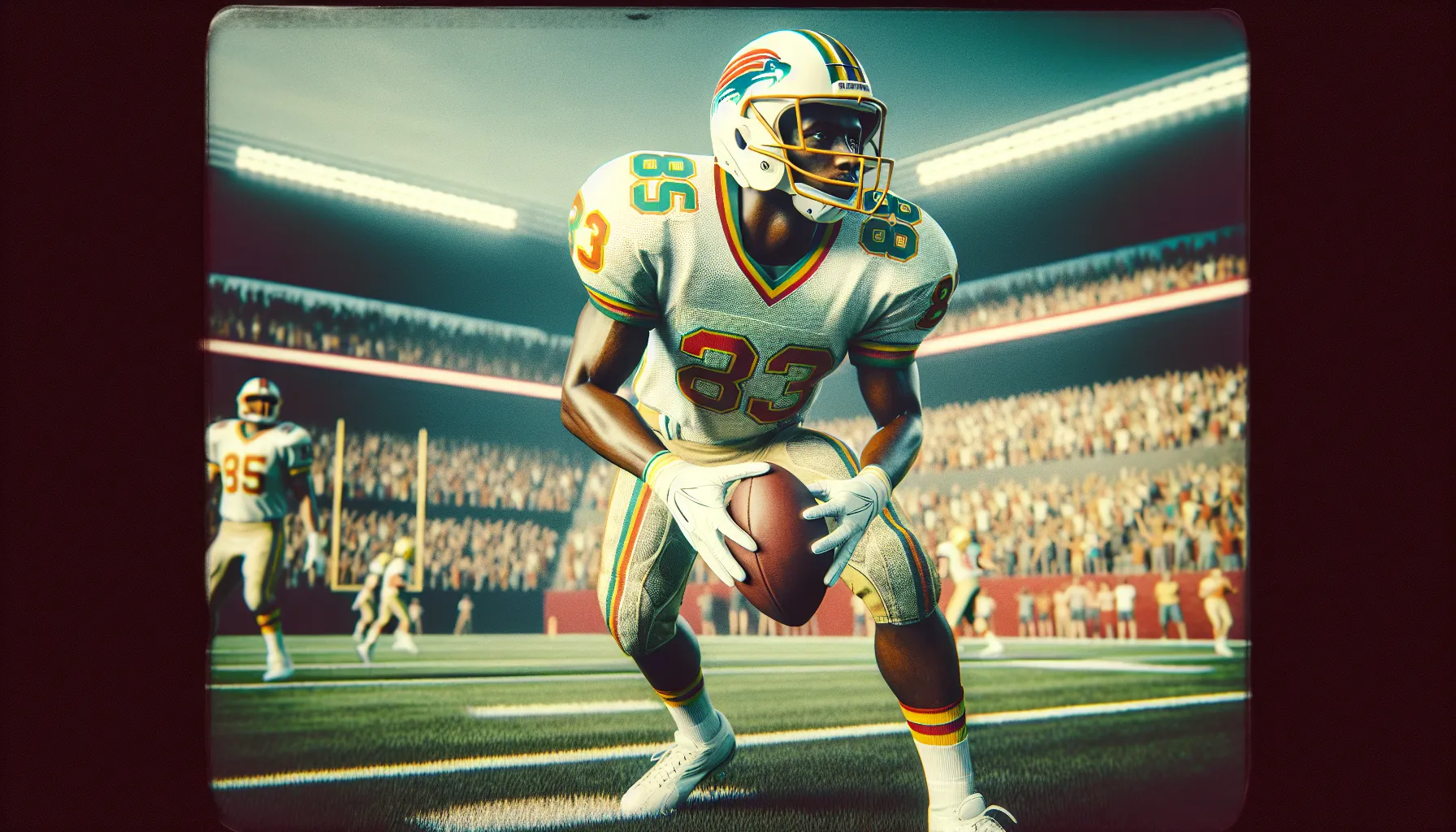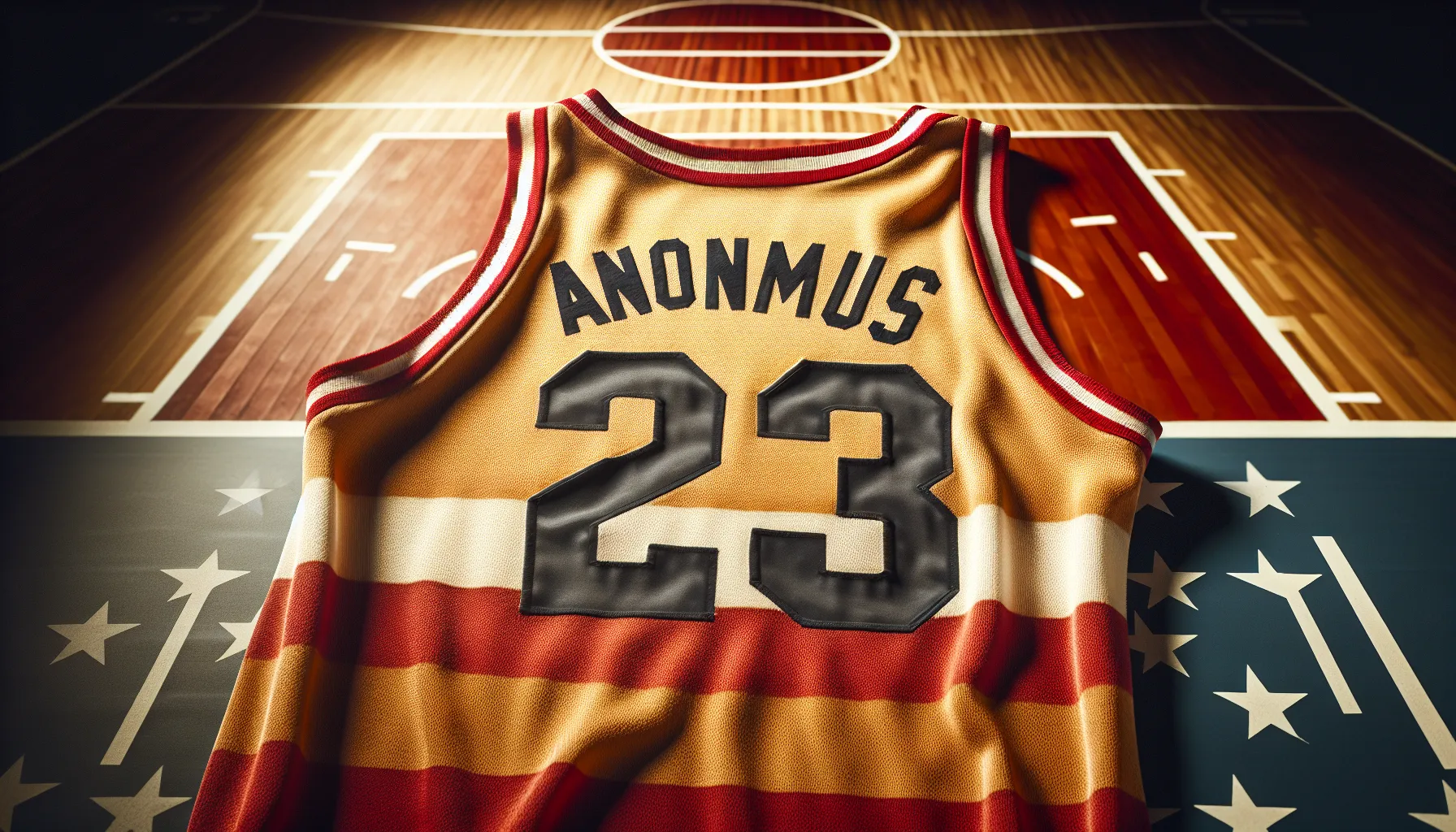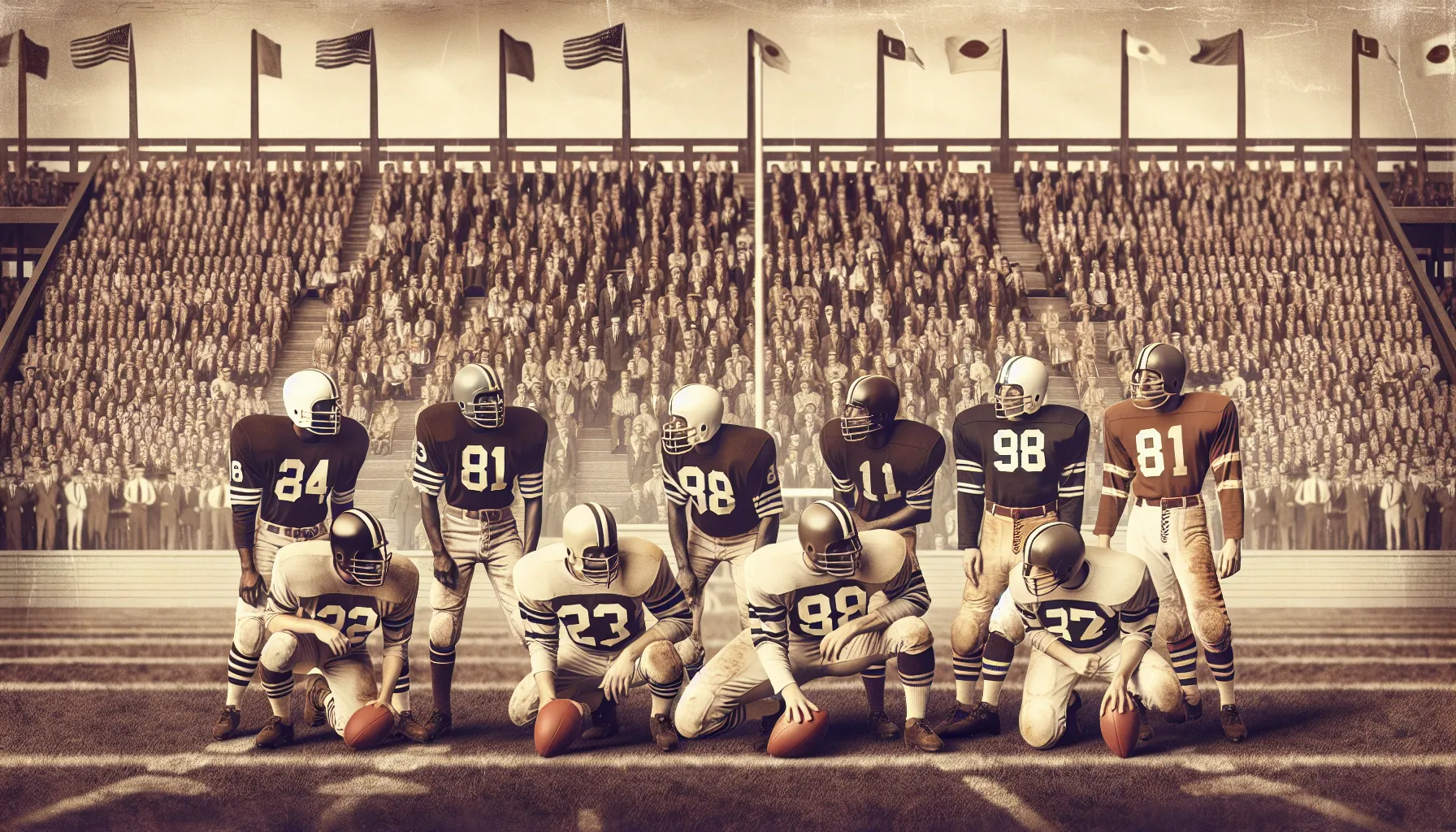Ever wondered why every player on a sports team wears a number on their jersey? Those digits aren’t just for decoration—they serve a purpose far beyond aesthetics. Whether you’re watching soccer, basketball, or football, those numbers are essential for identifying players, tracking stats, and ensuring smooth gameplay.
Numbers make it easier for fans, coaches, and referees to distinguish players during fast-paced action. They also play a crucial role in team strategy and record-keeping, helping you follow the game and connect with your favorite athletes. Without them, sports as you know it would be chaotic and harder to enjoy.
From iconic numbers worn by legends to the practical need for organization, jersey numbers carry meaning both on and off the field. Understanding why they exist gives you a deeper appreciation for the games you love. So, why exactly do sports teams rely on these numbers? Let’s dive in.
The History Of Numbers On Sports Jerseys
Numbers on sports jerseys began as a practical solution for identifying players, later evolving into a standard part of the game. Their development reflects the growth of sports and organizational needs.
Origins Of Numbering In Sports
The practice of numbering players started in the early 20th century to help spectators and officials identify individuals on the field. English soccer teams first introduced numbers in 1928, with players wearing numbers 1 through 11 based on positions. This system simplified player identification in large, crowded arenas. In baseball, the New York Yankees adopted permanent numbers in 1929, correlating numbers with the batting order. Over time, numbering expanded across sports worldwide, enhancing communication and gameplay transparency.
Evolution Of Jersey Numbers Over Time
Jersey numbers shifted from position-based assignments to personal identifiers as sports commercialized. By the mid-20th century, players began choosing numbers for sentimental reasons or branding purposes. Numbers gained symbolic meaning, with iconic figures such as Michael Jordan (#23) and Pele (#10) elevating their significance. Leagues established formal guidelines for numbering, as seen in football’s NFL jersey number rules, which assign number ranges to specific positions. Advances in printing technology also allowed for vibrant, durable designs, transforming numbers into part of the visual identity of teams and players.
Practical Reasons Behind Sports Teams Wearing Numbers

Jersey numbers serve essential functions in sports, ensuring efficient gameplay and accurate player identification. Their practicality extends to both team management and audience engagement.
Identifying Players On The Field
Numbers help you distinguish individual players during gameplay. In fast-paced sports like soccer or basketball, tracking specific players without visible identifiers becomes difficult. Numbers provide an instant visual cue for teammates, opponents, and officials. For example, they allow coaches to call out individual instructions or substitutions quickly. Additionally, they support accurate record-keeping, such as logging goals scored or fouls committed, which depends on reliable player identification.
Simplifying Communication For Officials And Spectators
Numbers streamline communication by minimizing confusion. Referees use numbers to issue warnings or penalties, ensuring clarity in their decisions. For instance, in football, a referee can assign a yellow card to a player by clearly stating their number. Spectators, broadcasters, and analysts also rely on visible numbers for engagement. They help you follow players during commentary, analyze performances, or track individual contributions during the game. In stadiums or televised events, numbers serve as the primary reference point between players and their actions.
Symbolism And Meaning Of Numbers In Sports

Numbers on jerseys carry deeper meaning beyond mere identification, serving as symbols that connect players to their personal identities, cultural beliefs, and sports traditions.
Numbers As Personal Identity
Numbers often represent individual identity in sports. Athletes frequently pick numbers that hold personal significance, such as birth dates, lucky numbers, or tributes to family members. For example, Kobe Bryant’s shift from No. 8 to No. 24 marked personal growth and a fresh chapter in his career. Over time, a player’s number can become synonymous with their name, achievements, and legacy. Fans, sponsors, and media often associate iconic numbers like Michael Jordan’s No. 23 or Lionel Messi’s No. 10 with the athletes themselves, reinforcing the connection between the player and their chosen number.
Superstition And Cultural Significance In Choosing Numbers
Superstitions and cultural beliefs greatly influence athletes’ number choices. Some players choose numbers based on numerology or perceived luck, hoping to enhance performance on the field. In Japanese baseball, No. 18 symbolizes a star pitcher, while in Italy, soccer players avoid the No. 17, which is considered unlucky. Cultural traditions, religious values, and even historical moments create additional layers of significance. These symbolic choices deepen players’ connection to their numbers and often resonate with fans who share similar beliefs or cultural backgrounds.
Standardization Of Numbering Systems Across Sports

Sports organizations implement standardized numbering systems to maintain consistency and improve communication during gameplay. These systems vary across sports but share the goal of streamlining player identification and adherence to league guidelines.
Rules And Regulations Across Different Leagues
Leagues establish uniform numbering rules to ensure clarity and consistency. For example, the NFL assigns numbers to players based on positions, such as quarterbacks wearing numbers 1–19, while in the NBA, players can choose any number between 0 and 99 except those retired by the team. FIFA mandates unique numbers for soccer players in tournaments, typically ranging from 1 to 23 for each squad. These regulations ensure fair gameplay and simplify identification for officials, fans, and broadcasters.
Specific Number Assignments For Positions
Position-based numbering is a common practice across many sports. In American football, offensive linemen primarily wear numbers in the 50–79 range, while defensive backs often use 20–49. Rugby assigns numbers to starting positions, like number 9 for the scrum-half and 10 for the fly-half. In hockey, while numbering isn’t position-specific, goalies frequently take lower numbers, such as 1 or 30. These conventions assist coaches, commentators, and referees in recognizing players’ roles during intense matches.
The Role Of Technology In Modern Jersey Numbering
Technological advancements have significantly influenced how jersey numbers function in contemporary sports. From enhancing player tracking to improving viewer experience, technology plays a pivotal role in modernizing jersey numbering.
Digital Tracking And Player Statistics
Digital tools integrate with jersey numbers to revolutionize player tracking and performance analysis. RFID chips, GPS trackers, and sensors embedded in jerseys link to numbers, enabling real-time data collection during games. For instance, these systems monitor player speed, distance covered, and physiological metrics, aiding coaches in strategic planning.
Sports analysts and broadcasters rely on this data, paired with jersey numbers, to provide insights and engage fans. In leagues like the NBA and NFL, advanced sensor technologies streamline statistical tracking, associating individual performances with specific numbers. This alignment of technology and numbers ensures accurate record-keeping and enhances the analytical aspect of sports.
Innovations In Jersey Design And Number Visibility
Technology has transformed jersey designs to make numbers more visible and durable. Advanced printing methods, including sublimation and heat-pressed vinyl, ensure numbers withstand wear during high-intensity matches. Reflective materials and bold fonts improve visibility under various lighting conditions, benefiting players, referees, and spectators alike.
Augmented reality (AR) and broadcast enhancements integrate technologically enhanced jersey numbers, improving how fans view games on screens. Systems like player identification overlays link digital visuals to jersey numbers, making it easier to follow individuals, particularly in fast-paced sports such as hockey or soccer. These innovations elevate audience experience while maintaining the functional role of jersey numbers.
Conclusion
Jersey numbers are far more than just identifiers; they’re a vital part of the sports experience. They bridge practicality with tradition, helping players, teams, and fans connect on a deeper level. From their historical origins to modern technological advancements, numbers on jerseys continue to evolve, shaping how we watch, analyze, and celebrate sports. Whether tied to a player’s legacy or enhancing gameplay, these numbers hold a unique place in sports culture that’s both functional and symbolic.
Frequently Asked Questions
Why do sports teams use jersey numbers?
Jersey numbers help identify players, track statistics, and ensure smooth gameplay. They assist coaches, referees, and spectators in distinguishing players during fast-paced games and support efficient communication during matches.
When did jersey numbers first appear in sports?
Jersey numbers were introduced in the early 20th century, with English soccer teams first adopting them in 1928. The New York Yankees followed in 1929, using numbers tied to the batting order.
Do athletes choose their jersey numbers?
Many athletes select numbers based on personal significance, such as a birth date or a lucky number. These choices often hold symbolic value and can become closely associated with the athlete’s legacy.
How do jersey numbers affect team strategies?
Jersey numbers simplify communication and help coaches identify players’ positions and roles during gameplay. Position-specific numbering also aids strategic planning, especially in sports like football and rugby.
Are jersey numbers standardized across sports?
Yes, most sports have guidelines for jersey numbering. Organizations like the NFL use position-based numbering systems, while FIFA mandates unique numbers for soccer tournaments to improve gameplay consistency.
How has technology influenced jersey numbers?
Technology has integrated tools like RFID chips and GPS trackers into jerseys to enhance player tracking and performance analysis. These innovations provide real-time data for coaches and broadcasters.
What role do jersey numbers play in player legacy?
Iconic athletes like Michael Jordan and Pele have linked their numbers to their identities, enhancing their cultural and historical significance. Fans often associate jersey numbers with players’ accomplishments.
Why are jersey numbers culturally significant?
In some cultures, numbers hold superstitions or symbolic meanings, influencing athletes’ choices. This connection strengthens the emotional and cultural ties between players and their jersey numbers.
How has jersey design improved over time?
Advances in printing have made jersey numbers more durable and visible during games. Technologies like augmented reality enhance how audiences follow players through digital visuals linked to their numbers.
Are specific numbers reserved for certain roles in sports?
Yes, many sports assign specific numbers to positions. For example, in American football, linebackers wear numbers in a particular range to help coaches, officials, and commentators quickly identify their role.
